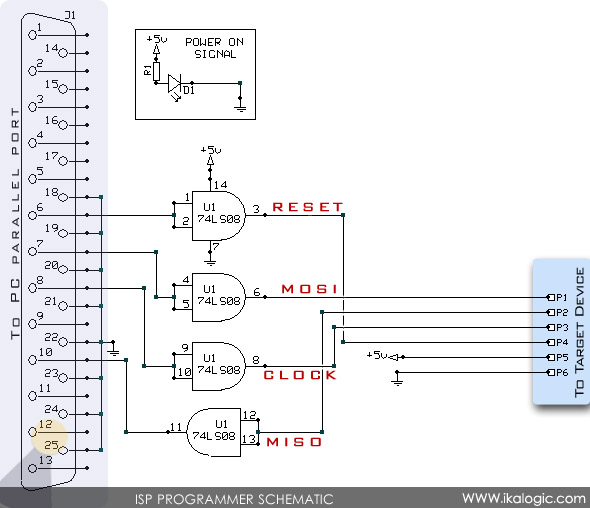
Wireless Ir Security System

This system consists of an infrared (IR) transmitter, an IR receiver combined with an RF transmitter, and an RF receiver that activates an alert beeper. The IR transmitter utilizes two LEDs to emit a pulsed beam of invisible infrared light towards the receiver, which incorporates an IR phototransistor. This phototransistor is responsible for detecting and amplifying the pulse-modulated infrared beam. When the receiver detects an interruption in the IR beam caused by an object obstructing its path, it activates the transmitter, which generates a 49.890 MHz carrier signal that is amplitude-modulated with a 490 Hz tone. The RF receiver/beeper unit responds to the 490 Hz amplitude-modulated carrier by sounding an alarm to notify the user of the intrusion. The system is designed to support multiple RF transmitters, allowing a single RF receiver/beeper to monitor numerous transmitter locations. However, it is important to note that the receiver/beeper unit does not have the capability to differentiate between various transmitter sites in systems with multiple transmitters.
The schematic of this system can be divided into three primary sections: the IR transmitter, the IR receiver with RF transmission capabilities, and the RF receiver/beeper unit.
In the IR transmitter section, the two LEDs are arranged in such a way as to maximize the coverage area of the emitted infrared light. They are driven by a pulse generator circuit that modulates the LEDs at a specific frequency, creating a pulsed infrared beam. The modulation frequency is critical for ensuring reliable detection by the phototransistor in the receiver.
The IR receiver section includes a phototransistor that is sensitive to the specific wavelength of the emitted infrared light. This component is connected to an amplification circuit that increases the strength of the detected signal. When the beam is interrupted, the receiver's circuitry detects the drop in signal strength, triggering a comparator circuit that activates the RF transmitter. The RF transmitter then generates the 49.890 MHz carrier signal, which is modulated with a 490 Hz tone using an amplitude modulation technique.
The RF receiver/beeper unit is equipped with a superheterodyne receiver design that demodulates the incoming RF signal. The demodulation process extracts the 490 Hz tone from the carrier frequency. Upon successful detection of this tone, the unit activates a beeper or alarm, which serves as an alert mechanism for the user. The RF receiver is designed to operate within a certain range, enabling it to pick up signals from multiple transmitters, although it lacks the sophistication to identify which specific transmitter has triggered the alarm.
Overall, this system provides a reliable method for detecting intrusions and alerting users, leveraging both infrared and radio frequency technologies to achieve its objectives. It can be utilized in various applications, including security systems and automated monitoring setups, where unobtrusive detection is necessary. This system contains an IR transmitter, an IR receiver/RF transmitter, and an RF receiver/alert beeper. Two IR LEDs in the transmitter transmit a pulsed beam of invisible infrared light to the receiver, which contains an IR phototransistor. The phototransistor detects and amplifies the pulse-modulated IR beam. If the receiver section senses that the IR beam is momentarily interrupted by an object blocking the beam"s path, it triggers the transmitter, which outputs a 49.890-MHz carrier that is amplitude-modulated by a 490-Hz tone.
Upon receiving the 490-Hz amplitude-modulated carrier, the RF receiver/beeper unit sounds an alarm that alerts the user to the intrusion. The system is not limited to just one RF transmitter. A single RF receiver/beeper can be used to monitor any number of RF transmitters (or locations). However, the receiver/beeper unit cannot discriminate between different transmitter sites in multiple-transmitter systems.
The schematic of this system can be divided into three primary sections: the IR transmitter, the IR receiver with RF transmission capabilities, and the RF receiver/beeper unit.
In the IR transmitter section, the two LEDs are arranged in such a way as to maximize the coverage area of the emitted infrared light. They are driven by a pulse generator circuit that modulates the LEDs at a specific frequency, creating a pulsed infrared beam. The modulation frequency is critical for ensuring reliable detection by the phototransistor in the receiver.
The IR receiver section includes a phototransistor that is sensitive to the specific wavelength of the emitted infrared light. This component is connected to an amplification circuit that increases the strength of the detected signal. When the beam is interrupted, the receiver's circuitry detects the drop in signal strength, triggering a comparator circuit that activates the RF transmitter. The RF transmitter then generates the 49.890 MHz carrier signal, which is modulated with a 490 Hz tone using an amplitude modulation technique.
The RF receiver/beeper unit is equipped with a superheterodyne receiver design that demodulates the incoming RF signal. The demodulation process extracts the 490 Hz tone from the carrier frequency. Upon successful detection of this tone, the unit activates a beeper or alarm, which serves as an alert mechanism for the user. The RF receiver is designed to operate within a certain range, enabling it to pick up signals from multiple transmitters, although it lacks the sophistication to identify which specific transmitter has triggered the alarm.
Overall, this system provides a reliable method for detecting intrusions and alerting users, leveraging both infrared and radio frequency technologies to achieve its objectives. It can be utilized in various applications, including security systems and automated monitoring setups, where unobtrusive detection is necessary. This system contains an IR transmitter, an IR receiver/RF transmitter, and an RF receiver/alert beeper. Two IR LEDs in the transmitter transmit a pulsed beam of invisible infrared light to the receiver, which contains an IR phototransistor. The phototransistor detects and amplifies the pulse-modulated IR beam. If the receiver section senses that the IR beam is momentarily interrupted by an object blocking the beam"s path, it triggers the transmitter, which outputs a 49.890-MHz carrier that is amplitude-modulated by a 490-Hz tone.
Upon receiving the 490-Hz amplitude-modulated carrier, the RF receiver/beeper unit sounds an alarm that alerts the user to the intrusion. The system is not limited to just one RF transmitter. A single RF receiver/beeper can be used to monitor any number of RF transmitters (or locations). However, the receiver/beeper unit cannot discriminate between different transmitter sites in multiple-transmitter systems.





